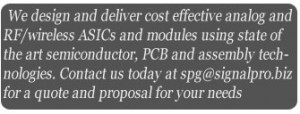Small loop antennas are very useful structures used extensively in the radio world. However, the question is: what exactly is a small loop antenna? By definition a loop antenna is considered small when its total conductor length is less than 0.1 – 0.085 of the wavelength. This definition is based on the fact that the current around the perimeter of the loop must be in phase. When the winding conductor is more that 0.085 of a wavelength long, this is no longer true. The simplest loop antenna is a single turn of a conductor loaded at a pair of its terminals at the center of one of the sides. A good tool to use to understand and analyze this structure is the freeware program NEC2. The voltage generated across the terminals of the loop is given by a simple expression: V=[2.0*pi*A*N*E*Cos(theta)]/lambda. lambda is the wavelength of operation, pi=22/7, A is the area of the loop in square meters, N is the number of turns in the loop, E is the RF field strength in volts per meter, theta is angle between the plane of the loop and the signal source ( transmitter). For further information please search for small loop antennas in this blog to access the EXCEL spreadsheet useful in designing a practical antenna or visit http://www.signalpro.biz and look under ” free stuff”..( More to come on small loops)
Analog, RF/Wireless ASIC and module design, development and manufacturing
Design, develop, manufacture and deliver great analog and RF/Wireless Integrated Circuits and modules.

